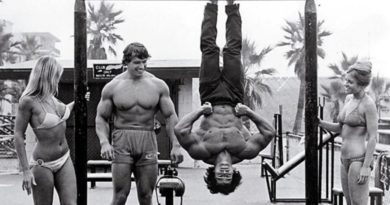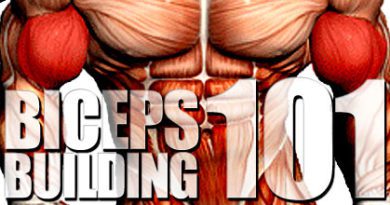Muscle Confusion: Can You Really Confuse Your Muscles or Nah?
Muscle confusion is something that has been tossed around the training community and in gyms for as long as I can remember. People would give advice and mention that you need to confuse your muscles in order to see any sort of growth. But is muscle confusion really as necessary as people make it out to be? Should you change your workouts and exercises more frequently to confuse your muscles, or are you merely wasting your time and energy?
In this article, we will take a deeper look into muscle confusion and everything around the topic to better understand whether there’s a need to confuse your muscles or if there is a better way of promoting hypertrophy and building the quality muscle mass you’re looking for.
Disclaimer: This article is for informational purposes only and is not meant to treat or diagnose any condition. It is recommended that you speak with your doctor before starting any exercise program, changing your daily nutrition, or adding any supplements to your regimen.
Table of contents

What is Muscle Confusion?
There seems to be some sort of misunderstanding of what muscle confusion is exactly. It’s thrown around in gyms across the nation, but muscle confusion really doesn’t exist. It’s just a magical phrase that is overused and overcomplicated — rarely providing any results at all.
Muscle confusion first came about when bodybuilders thought that in order to grow lean muscle tissue, you needed to confuse your muscles with a stimulus that it’s not used to. That means constantly changing up your workouts and exercises to ensure you aren’t hitting the muscles with a stimulus that the muscles have gotten used to and, therefore, won’t provide a new stimulus to promote tissue growth.
As an example, the thought process is that if you do a bench press every week, your chest will get used to the stimulus and not grow (we will look at this differently in the next section). Or if you do barbell curls every week, your body will get used to it and not want to build new muscle. Therefore, many think they need to change their workout up consistently in order to confuse your muscles — never doing the same thing two workouts in a row.
Related Article: Change Up Your Boring Workout to Promote New Muscle Growth
While some of that is true, there’s a lot of drawing unnecessary straws going on that is confusing you more than it is trying to confuse your muscles.
Let’s take an even deeper look into muscle confusion and the need to confuse your muscles.
Do You Really Need to Confuse Your Muscles?

Here’s the deal with what is considered muscle confusion… you can’t confuse your muscles. Your muscles have no clue what exercise you’re doing, only the stimulus you provide to the muscle itself. Whether you’re doing a dumbbell curl, barbell curl, barbell chest press, machine chest press, etc., your muscles have no idea, its only role is to contract and stretch. How it does so is not its concern, its only concern is the recruitment of muscle fibers to allow you the ability to do rep after rep before fatigue sets in.
Something else you need to consider that no one really talks about when it comes to muscle confusion is weight. If you do a chest press today, a dumbbell chest press next workout, and a machine chest press the workout after that, you’re not going to be doing the same weight, correct? If you are benching 225 on a flat bench and move to dumbbells, you’re probably not going to be tossing up the 110s or 115s in each hand. When you move to the machine, the pulleys are going to assist in the movement, so the weight may not be a “true” weight.
Each time you change up exercise, you’re changing the stimulus on the muscle in a way that is not exactly beneficial or in a linear trajectory to promote hypertrophy. Instead, you’re all over the place, and if you were to chart it, the graph would resemble an EKG test.

The examples mentioned above all provide a varying stimulus to the chest. Some workouts may stimulate the muscle more than the previous one or vice versa. There’s no consistency from workout to workout where you have the ability to overload the muscle. Therefore, it’s nearly impossible to promote any sort of muscle growth when you’re not progressively overloading and stressing the muscle fibers.
Did you notice what was just said in the paragraph above? There’s a keyword in there that I want you to pay close attention to. The word is “overload.” Forget about muscle confusion. Forget about trying to confuse your muscles every time you step into the gym. Instead, I want you to focus on progressive overload. Again, you can’t confuse your muscles, so this “muscle confusion” mentality is going to send you down the road to frustration when you don’t see any new muscle growth.
What I want you to put all your focus into is progressive overload. Each workout, you’ll want to push your body harder and further than the previous workout. And it has nothing to do with muscle confusion or trying to “outsmart” the muscle by tossing in different exercises each workout. The goal must be to provide a greater muscle stimulus than in previous workouts.
Click here to continue reading…


*Disclosure: This article may contain affiliate links or ads, which means we earn a small commission at no extra cost to you if you make a purchase through these links. These commissions help support the operation and maintenance of our website, allowing us to continue producing free valuable content. Your support is genuinely appreciated, whether you choose to use our links or not. Thank you for being a part of our community and enjoying our content.
PLEASE CONSIDER SHARING THIS ON YOUR SOCIAL MEDIA TO HELP OTHERS LEARN MORE ABOUT THIS TOPIC.





